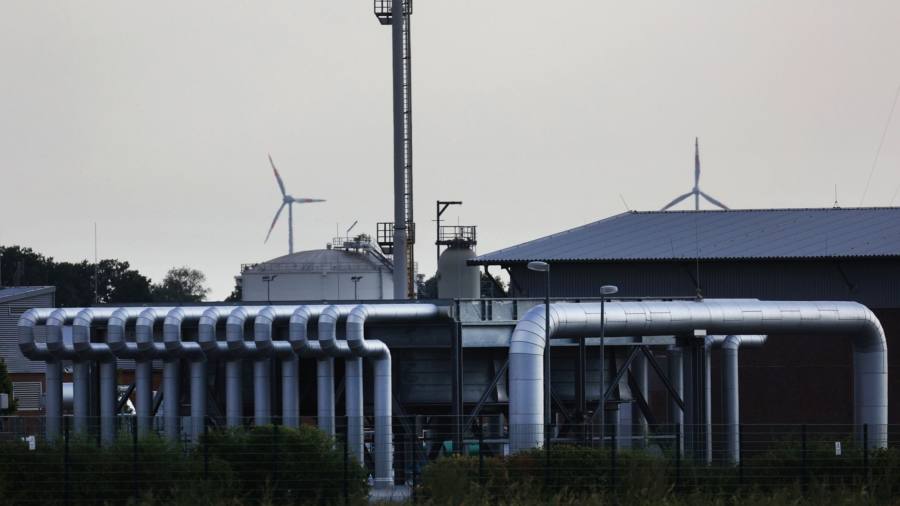
European natural gas prices have dropped below €100 per megawatt hour for the first time since Russia slashed supplies this summer, with warm weather and close-to-full gas storage easing concerns over winter shortages.
The price drop will come as a boost for the EU leaders who are working to place a cap on the price of the fuel as it fights high inflation and a slowing economy, and in an attempt to deny Moscow funds for its invasion of Ukraine.
Dutch TTF gas futures, the benchmark European contract, dropped as low as €93.35/MWh ($27 per MMBTU) on Monday, down nearly 20 per cent compared with Friday, the lowest it has been since mid-June.
European gas prices are now 70 per cent below levels seen in August, when they soared above €300/MWh, although they are still well above the €20 to €40/MWh range they largely traded at over the past decade. UK gas contracts for delivery in November also fell as much as 15 per cent, declining to £1.72 per therm ($19 per MMBTU).
James Waddell at Energy Aspects said that prices were falling in the short-term because of “limited storage capacity remaining, low gas demand because of mild weather, and congestion in bringing in LNG and flowing it east within Europe”.
Reduction in demand has also helped with storage; think-tank Bruegel’s European natural gas demand tracker shows Europe has lowered its demand by 7 per cent year-to-date compared with the 2019-21 average. The EU has agreed to reduce gas demand voluntarily by 15 per cent this winter.
Tom Marzec-Manser at ICIS said that currently consumption was about 20 per cent lower in Europe than usual for this time of year. “Demand is really low, both because [the weather is] very mild and clearly actions of individuals and businesses to save gas are starting to come through,” he said.
Increased imports of liquefied natural gas to replace Russian pipeline supplies — which now only accounts for 9 per cent of EU supply, down from 40 per cent last year — have helped European storage to reach more than 90 per cent capacity, while warm weather has meant a delay in heating demand.
Henning Gloystein at Eurasia Group said there was a temporary glut of supply as the ability to keep injecting gas into storage was limited, forcing more gas to be sold on the spot market.
“Once such storage sites get near capacity, the injection ability drops sharply because the cavernous pressure is so high,” Gloystein said.
European governments have spent tens of billions of euros compensating households and businesses for rising energy bills, and EU leaders last week agreed to work towards putting a price cap on natural gas.
But whether Europe has enough gas for the winter still relies on the weather, said Alex Tuckett at CRU Group. “If we have a mild to average winter, we should probably avoid [energy] rationing. A cold winter will be much harder”.
TTF contracts for delivery in the first quarter of next year also fell but by a lesser amount, declining 6 per cent to €142/MWh, with UK prices for the period trading at roughly the same level.
Some analysts have argued that the next winter will represent an even tougher challenge, with much less Russian gas available to Europe. Russian flows were only down slightly in the first six months of the year, giving a head start on filling storage, before Moscow openly started slashing supplies.
Since then the Nord Stream 1 pipeline, one of the main conduits from Russia to Europe, has been cut off indefinitely by suspected sabotage.
“The problem is getting enough gas into storage for next winter, given that we are likely to lose about 45-50bn cubic metres of Russian gas on a year-on-year basis, and it is very unlikely that LNG can cover that gap,” said Waddell of Energy Aspects.
“So we can’t afford to withdraw that much this winter from storage or we’ll struggle to have adequate stocks next year,” he said.